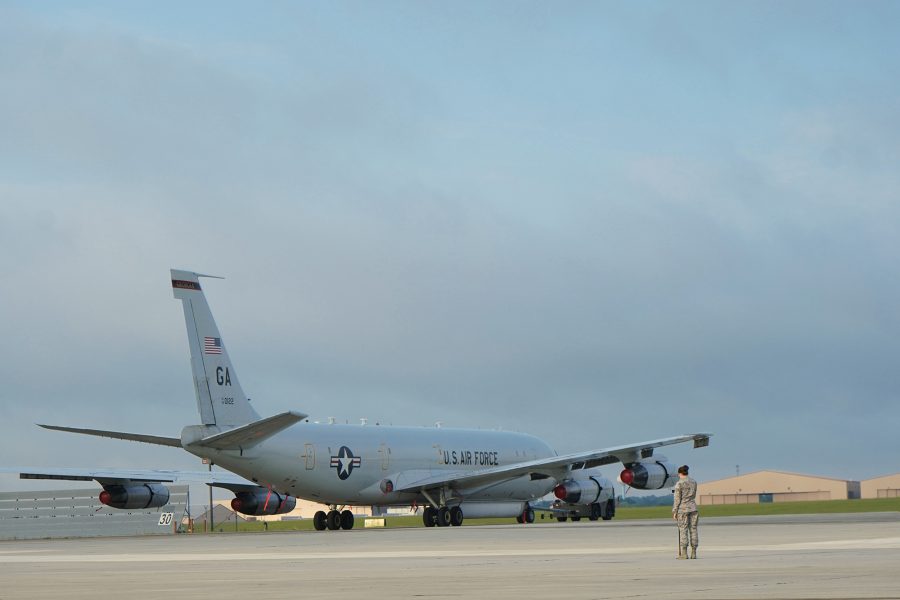E-8C is a ground moving target indication (GMTI), airborne battlefield management/command and control platform. Its primary mission is providing theater commanders with ground surveillance data to support tactical operations.
E-8 evolved from the Army/Air Force Joint Surveillance Target Attack Radar System (JSTARS) program. The aircraft made its first radar-equipped test flight in December 1988, and the first two aircraft deployed for Desert Storm while the system was still under development. Early airframes were eventually retrofitted to Block 20 production standards featuring more powerful computers, an internet protocol local area network, and BLOS connectivity.

JSTARS is equipped with a canoe-shaped radome under the forward fuselage housing a 24-ft-long, side-looking phased array radar antenna. It can locate, classify, and track vehicles and ships at distances exceeding 124 miles, and more recent refinements added humantarget tracking. Target data is transmitted via data link to ground stations or other aircraft. USAF dropped plans to replace JSTARS with a modern, business-class aircraft pursuing the Advanced Battle Management System (ABMS) instead.
ABMS notionally disaggregated JSTARS functions among several platforms but was drastically cut in FY21, refocusing on technology development. USAF now plans to shift future GMTI efforts to a space-based approach to overcome anti-access/area denial threats.
Ongoing upgrades include secure Common Data Link (CDL) for LOS networking to Common Ground Stations and UHF/VHF SATCOM modernization. Congress approved divestiture of JSTARS starting with four airframes in FY22. USAF will retire an additional eight aircraft in FY23 and complete phaseout in FY24.
Contractors: Northrop Grumman; Raytheon.
First Flight: April 1, 1988.
Delivered: March 22, 1996-March 23, 2005.
IOC: Dec. 18, 1997.
Production: 18.
Inventory: 12 (E-8C); one (TE-8).
Operator: ANG.
Aircraft Location: Robins AFB, Ga.
Active Variants: •E-8C. Block 20 upgraded JSTARS platform based on the Boeing 707-300. •TE-8A. Crew training aircraft based on the E-8
Dimensions: Span 145.8 ft, length 152.9 ft, height 42.5 ft.
Weight: Max T-O 336,000 lb.
Power Plant: Four Pratt & Whitney TF33-102C turbojets, each 19,200 lb thrust.
Performance: Speed 584 mph (optimal orbit), range 11 hr normal endurance (longer with air refueling).
Ceiling: 42,000 ft.
Accommodation: Two pilots, navigator, flight engineer, 15 Air Force/three Army mission crew (mission dependent).


